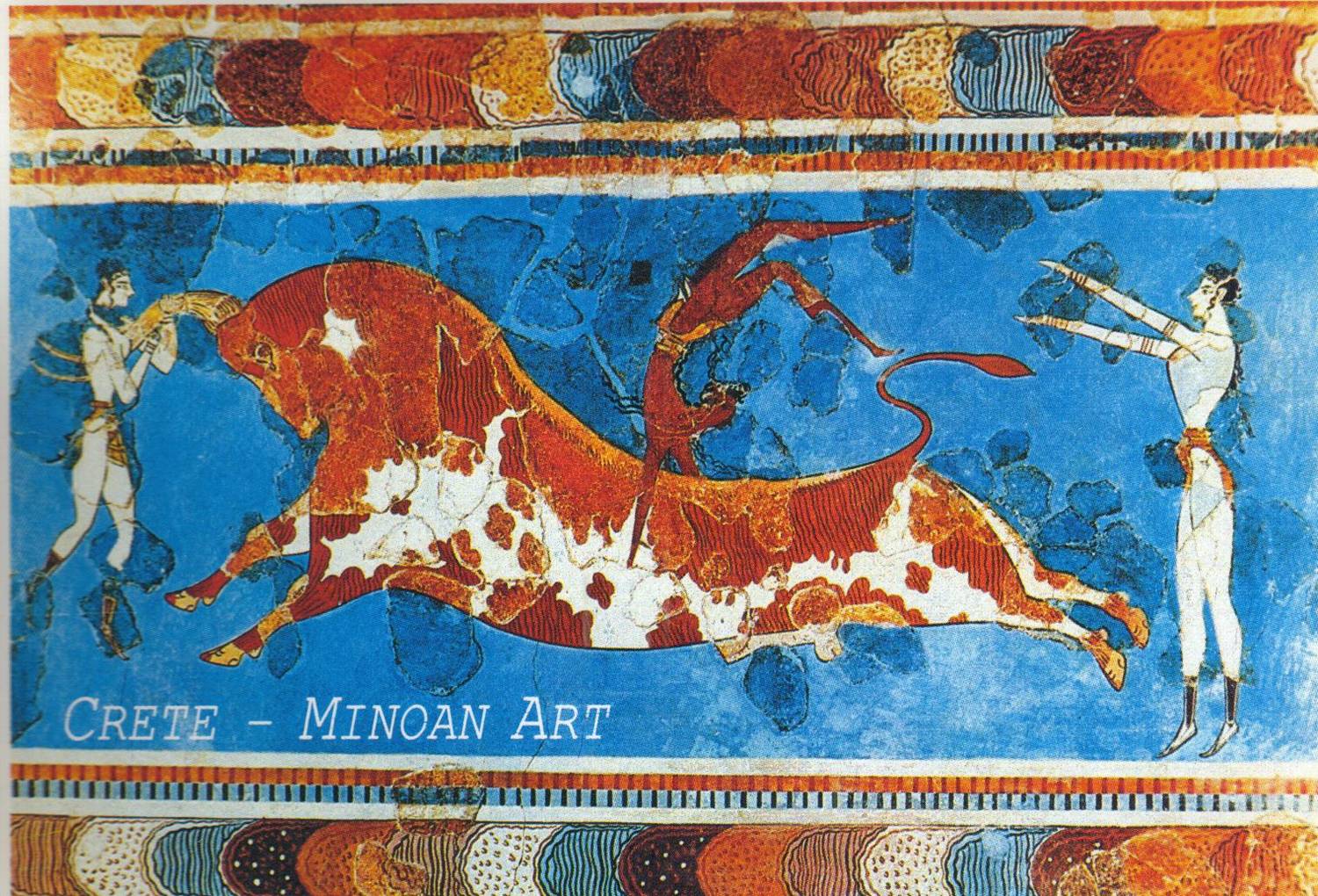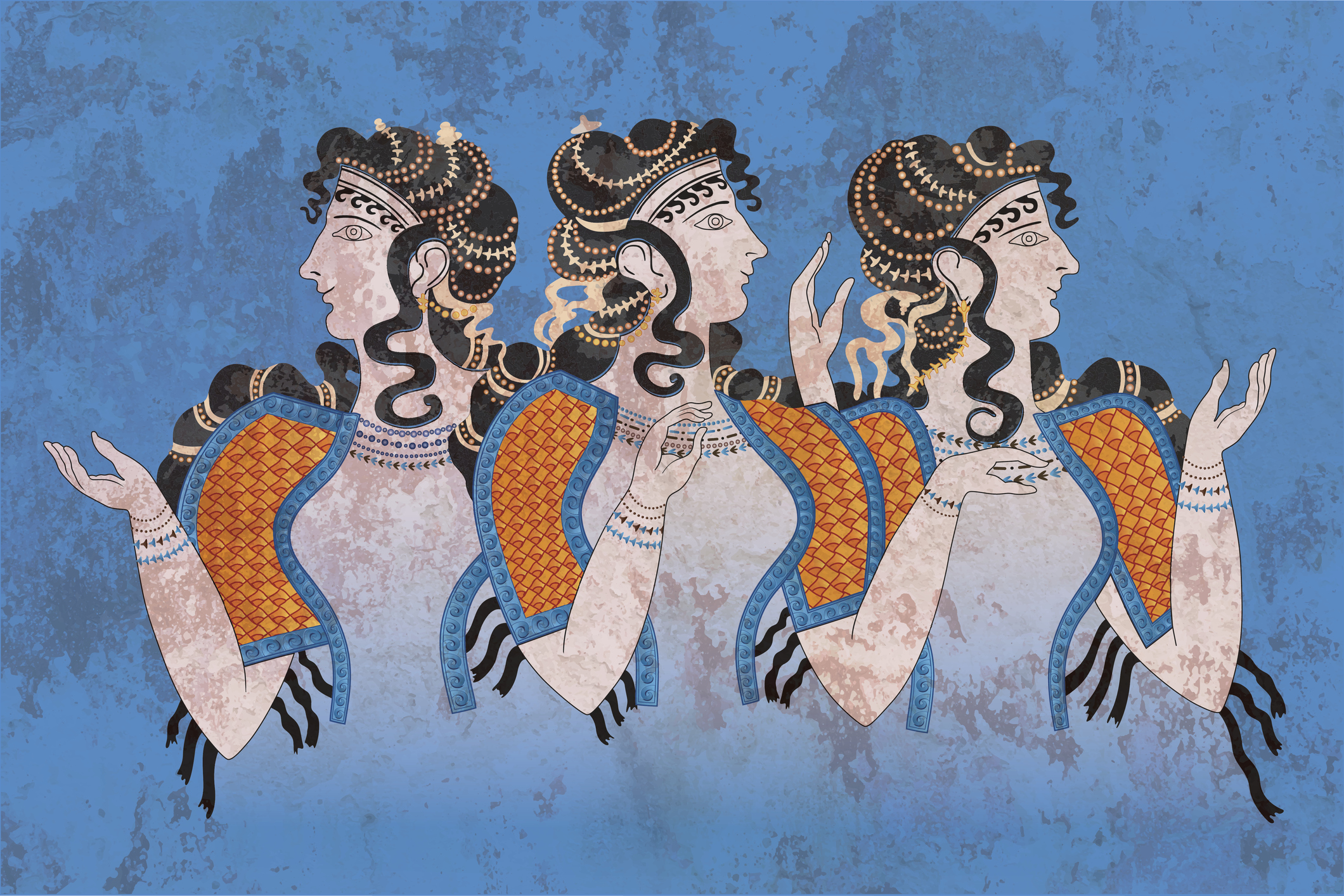

There were no large indigenous predators. The fierce bulls that feature so prominently in frescos may have been imported from the mainland, but were certainly the largest land animals on the island. The horses that appear in Minoan art were rare, and ownership would have indicated wealth. In antiquity, Crete produced the staples of the “Mediterranean triad”: grain crops, vines, and olives, and the Minoans herded sheep and goats.

Later, this location would mean access to the wealth of the Mediterranean basin. In earliest Neolithic times this meant protective isolation for the developing culture. At 155 miles east to west and 37 miles north to south, no part of the island is far from the sea. Ĭrete, located in the middle of the Mediterranean Sea, is an ideal birthplace for an early trading society. In the case of the Minoans, our task is further complicated because some of their artifacts originally identified as genuine by Sir Arthur Evans and others are now suspected to be forgeries, thus adding to the challenge of reconstructing this vanished culture. Lacking the traditional written history that historians prefer to work with means “that scholars have had to be ingenious in arriving at research methods that will extract the maximum” from the other types of information we have. The opportunity for conjecture is large, and the scope of speculation expands the further back in pre-history we travel. When we study a vanished civilization whose written language has yet to be deciphered, we must work from other sorts of records: architectural sites, pottery shards, burial jewelry. Nevertheless, the persistent cultural identity of the Minoan civilization retains such strong characteristics that it is easy to identify across the centuries. “The Golden Age of prehistoric Crete equaled and in many ways surpassed that of Athens itself over a thousand years later.” “Minoan culture must be seen in its Mediterranean context as one of the early urban civilizations to be compared with those of Egypt and Mesopotamia rather than later Greek.” Given this perspective, we may well speculate upon what level of development European civilization might have achieved had the Minoans not disappeared.įor a brief survey of this sort we are forced to compress two millennia of history. Historians have long observed that certain aspects of the Minoan culture were unmatched for many centuries. Examination of Minoan attainment in social organization, technology, and the arts illustrates that humanity lost centuries of evolution when this unique society vanished. Thus the Minoans may appropriately be characterized as the “over-achievers” of the Mediterranean theatre. Specifically, given the high level of societal and technological development obtained by the Minoan civilization in the second millennium BCE, to what point might human society have progressed had this people not abruptly disappeared? Rodney Castleden asserts that “Minoan Crete may be seen as a cradle of civilization on a level with the Nile, Indus, Tigris and Euphrates valleys”, but highly distinctive in its own development.
#MINOAN CIVILIZATION FULL#
How World History Might Have Been Different without TheraĬolin Renfrew tells us that the development of the Aegean has “considerable continuity from the early Neolithic period to the full development of civilization.” But since the continuity of a principal Aegean culture was terminated in full flower at the beginning of this process, we must ask what effect its absence had on the rate and level of progress of the societies that survived.


 0 kommentar(er)
0 kommentar(er)
